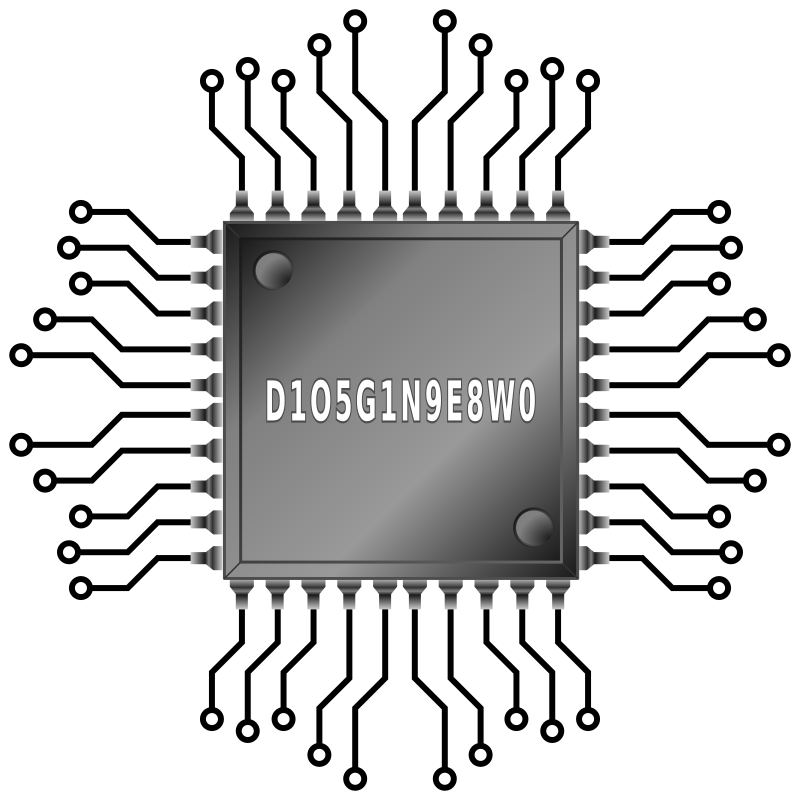The cryptocurrency market continues to expand, with over 22,000 digital currencies already in existence. This growth highlights the potential for new projects to succeed. However, creating a crypto asset requires more than just an idea.
Technical expertise is essential. Whether building a new blockchain or modifying existing code, developers must understand the underlying technology. A clear purpose is equally important, as it drives market demand and user adoption.
Unlike traditional money, cryptocurrencies don’t need government approval. This freedom allows for innovation but also demands careful attention to legal compliance. Platforms like ChainZilla simplify the process, offering blockchain-as-a-service solutions.
From meme-based coins like Dogecoin to eco-focused tokens like IMPT, the possibilities are vast. Success depends on execution, market demand, and a solid foundation in blockchain principles.
Introduction to Cryptocurrency Creation
Blockchain technology powers the foundation of modern cryptocurrencies. These digital currencies are secured through cryptography, ensuring safe and transparent transactions. Unlike traditional money, they operate on decentralized networks, eliminating the need for intermediaries.
The journey began in 2009 with the launch of Bitcoin, the first cryptocurrency. Since then, the market has evolved dramatically, with thousands of tokens and coins now available. Today, 48% of Americans have traded crypto, according to Pew Research.
Major cryptocurrencies serve different purposes. Bitcoin is a store of value, Ethereum enables smart contracts, and Ripple facilitates cross-border payments. Each token or coin is built on blockchain technology, a decentralized ledger that records all transactions.
Creating a digital currency involves several pathways:
- Building a native blockchain from scratch.
- Forking an existing chain to create a new version.
- Developing a token on an established platform like Ethereum.
- Hiring developers to handle the technical aspects.
Defining the use case is crucial. Some cryptocurrencies function as payment systems, while others are utility or security tokens. Regulatory compliance also varies widely. For example, the U.S. SEC provides guidelines, while China has imposed a complete ban.
| Cryptocurrency | Primary Use |
|---|---|
| Bitcoin | Store of value |
| Ethereum | Smart contracts |
| Ripple | Cross-border payments |
Understanding these fundamentals is essential for anyone exploring the world of cryptocurrencies. Whether you’re an investor or a developer, the possibilities are vast and transformative.
Understanding the Basics of Blockchain Technology
Blockchain technology forms the backbone of modern digital systems. It is a decentralized ledger that records transactions across multiple computers. This ensures transparency and immutability, making it a trusted system for various applications.
At its core, blockchain technology consists of three main components: blocks, nodes, and chains. Each block contains a list of transactions, and these blocks are linked together to form a chain. Nodes are individual computers that validate and store the entire blockchain.
The mining process is essential for verifying transactions. Miners solve complex mathematical problems to add new blocks to the chain. This process ensures the integrity and security of the blockchain.
Blockchain architectures vary between public and private systems. Public blockchains, like Bitcoin, are open to anyone. Private blockchains, on the other hand, restrict access to authorized participants. Both types have unique advantages depending on the use case.
Cryptographic hashing plays a critical role in blockchain. It converts data into a fixed-size string of characters, ensuring data immutability. Once a block is added, altering its content becomes nearly impossible.
Energy consumption is a significant concern in blockchain. Bitcoin mining requires substantial power, while Ethereum 2.0 aims to reduce energy usage through a proof-of-stake mechanism. This transition highlights the industry’s focus on sustainability.
Smart contracts are another innovation enabled by blockchain. Built using Solidity on Ethereum, these self-executing contracts automate processes without intermediaries. They are widely used in decentralized finance (DeFi) and supply chain management.
Beyond currency, blockchain has real-world applications. It is used for supply chain tracking, ensuring transparency from production to delivery. Non-fungible tokens (NFTs) also leverage blockchain to verify ownership of digital assets.
Security is a top priority in blockchain. Mechanisms like 51% attack prevention ensure the network remains secure. Interoperability solutions, such as Polkadot’s parachain system, enable different blockchains to communicate seamlessly.
| Blockchain Feature | Description |
|---|---|
| Blocks | Containers for transaction data |
| Nodes | Computers that validate and store the blockchain |
| Chain | Linked sequence of blocks |
Understanding these fundamentals is crucial for leveraging blockchain technology. Whether for financial systems or supply chains, blockchain offers transformative potential.
Can I Start My Own Cryptocurrency? Key Considerations
Launching a digital currency involves more than just coding; it requires strategic planning and adherence to regulations. Developers must address four essential questions: purpose, technical capacity, legal compliance, and maintenance plans. These factors determine the success of the project.
Costs vary significantly based on the approach. Creating a custom blockchain can range from $500 to $5,000 or more. In contrast, token creation on platforms like Binance Smart Chain (BSC) is often free. Time estimates also differ—BSC tokens can be developed in minutes, while original chains may take six months or longer.

Technical skills are crucial. Developers need expertise in programming languages like Solidity or Rust, cryptography, and game theory. A team of 3-5 members is typically required for serious projects. Ongoing maintenance, including node operation and security audits, adds to the long-term costs.
Market differentiation is key to standing out. For example, IMPT focuses on carbon credits, while Chiliz targets fan engagement. Understanding the market and identifying a unique value proposition are essential for adoption.
Legal compliance cannot be overlooked. Forming an LLC, registering with FinCEN, and implementing anti-money laundering protocols are critical steps. The SEC vs. Ripple lawsuit highlights the importance of adhering to regulations to avoid legal challenges.
| Aspect | Details |
|---|---|
| Cost | $500-$5,000+ (custom blockchain) vs. Free (BSC tokens) |
| Time | 5 minutes (BSC tokens) vs. 6+ months (original chains) |
| Skills | Solidity/Rust, cryptography, game theory |
| Team | Minimum 3-5 members |
| Maintenance | Node operation, security audits |
Launching a cryptocurrency is a complex but rewarding endeavor. By addressing these considerations, developers can build a successful and compliant digital asset.
Choosing the Right Blockchain Platform
Selecting the ideal blockchain platform is a critical step in launching a successful digital asset. The platform you choose will determine the scalability, security, and functionality of your project. With numerous options available, understanding the strengths and limitations of each is essential.
Popular Blockchain Platforms
Several platforms dominate the blockchain space, each catering to specific needs. Ethereum is renowned for its smart contract capabilities, enabling developers to build decentralized applications (DApps). Binance Smart Chain (BSC) offers low transaction fees, making it a cost-effective choice for many projects. Solana stands out for its high throughput, processing up to 65,000 transactions per second.
| Platform | Key Feature |
|---|---|
| Ethereum | Smart contracts |
| Binance Smart Chain | Low fees |
| Solana | High throughput |
Factors to Consider When Choosing a Platform
When evaluating a blockchain platform, consider its technical requirements. Some platforms, like Ethereum, use the Ethereum Virtual Machine (EVM), while others, like Solana, have unique architectures. Community support is another critical factor. Ethereum boasts over 4,000 DApps, while Algorand focuses on academic partnerships.
The consensus mechanism also plays a vital role. Proof-of-Work (PoW) offers high security, while Proof-of-Stake (PoS) provides greater efficiency. Cross-chain capabilities, such as Cosmos SDK or Polygon’s Ethereum bridging, can enhance interoperability. Additionally, consider the programming language required for smart contracts, such as Solidity, Rust, or Clarity.
Node operation costs vary widely. Ethereum requires 32 ETH for staking, while BSC has lower barriers to entry. Regulatory compliance features, like those offered by Hedera Hashgraph, are essential for enterprise-focused projects. Finally, scalability tests, such as Ethereum’s 15 TPS versus Solana’s 65,000 TPS claims, should guide your decision.
Designing Your Cryptocurrency
Designing a cryptocurrency involves careful planning and strategic decisions to ensure its success. The process requires a clear understanding of the project’s goals, technical requirements, and market needs. By focusing on these elements, developers can create a digital asset that stands out in a competitive market.
Defining the Purpose and Use Case
The first step in designing a cryptocurrency is defining its purpose. Will it serve as a medium of exchange, a governance token, or a stablecoin? Each use case requires a unique approach. For example, Bitcoin is designed as a store of value, while Ethereum facilitates smart contracts.
Tokenomics plays a crucial role in this stage. Developers must decide between a fixed supply model, like Bitcoin, or an inflationary model, like Ethereum. The choice impacts the token’s value and long-term sustainability.

Wallet integration is another critical factor. Will the token support browser extensions, hardware wallets, or both? Planning for user accessibility ensures wider adoption and usability.
Selecting a Consensus Mechanism
The consensus mechanism determines how transactions are validated on the blockchain. Popular options include Proof-of-Work (PoW), Proof-of-Stake (PoS), and hybrid models. Each has its strengths and trade-offs.
Proof-of-Stake variants, like Delegated PoS (EOS) and Liquid PoS (Cosmos), offer energy efficiency and scalability. Hybrid models, such as Dash’s combination of PoW and PoS, provide a balance between security and speed.
Incentive structures are also essential. Miners in PoW systems earn rewards, while PoS participants receive staking yields. These mechanisms encourage network participation and security.
| Consensus Mechanism | Key Feature |
|---|---|
| Proof-of-Work | High security, energy-intensive |
| Proof-of-Stake | Energy-efficient, scalable |
| Hybrid (PoW/PoS) | Balanced security and speed |
Smart contract audits are crucial for ensuring security. Platforms like CertiK and OpenZeppelin provide tools for verifying code integrity. Testnet deployment strategies, such as using Goerli or Solana Devnet, allow developers to test their projects before the mainnet launch.
By addressing these aspects, developers can design a cryptocurrency that meets market demands and adheres to technical and regulatory standards.
Technical Steps to Create Your Cryptocurrency
Building a digital asset involves a series of technical steps to ensure functionality and security. From setting up nodes to developing user-friendly interfaces, each phase requires careful planning and execution. Let’s break down the essential components of this process.

Setting Up Nodes
Nodes are the backbone of any blockchain network. They validate transactions and maintain the ledger. Configuring nodes involves choosing between cloud-based solutions like AWS EC2 or local server setups. AWS EC2 offers scalability and reliability, while local servers provide full control over the architecture.
Key considerations include hardware specifications, network bandwidth, and storage capacity. Proper node configuration ensures smooth operation and enhances network performance.
Developing APIs and User Interfaces
APIs bridge the gap between your blockchain and external applications. Integrating APIs like CoinGecko for price feeds or MetaMask for wallet connectivity enhances functionality. A well-designed user interface (UI) is equally important. Platforms like Uniswap set the standard with intuitive swap interfaces.
When selecting a programming stack, developers often choose between Python/Django for backend development and JavaScript/React for frontend design. Both options offer robust frameworks for building scalable applications.
- Security Protocols: Implement two-factor authentication to protect user accounts.
- Smart Contract Deployment: Use tools like Remix IDE to deploy contracts to the Mainnet.
- Testing Frameworks: Choose between Truffle Suite and Hardhat for comprehensive testing.
Gas optimization techniques, such as batch transactions and layer-2 solutions, reduce costs and improve efficiency. Before the Mainnet launch, conduct thorough security audits, set up liquidity pools, and register with blockchain explorers.
Legal and Regulatory Compliance
Navigating the legal landscape is a critical step in launching a cryptocurrency. Ensuring compliance with regulations protects your project from legal challenges and builds trust with users. This process involves understanding local and global laws, registering your digital asset, and implementing robust security measures.
Understanding Legal Requirements
In the U.S., the SEC plays a central role in regulating cryptocurrencies. The Howey Test determines whether a token is classified as a security. If it meets the criteria, the token must comply with SEC regulations, including registration and disclosure requirements.
Licensing varies by state. Wyoming offers favorable conditions through its SPDI framework, while New York requires a BitLicense, which involves stringent application procedures. Globally, Malta’s VFA Act and Singapore’s PSA provide clear guidelines for crypto businesses.
KYC (Know Your Customer) and AML (Anti-Money Laundering) protocols are essential. Integrating tools like Onfido or Sumsub helps verify user identities and monitor transactions. These measures ensure compliance with FinCEN regulations and reduce the risk of illegal activities.

Registering Your Cryptocurrency
Tax obligations are another critical aspect. The IRS treats cryptocurrencies as property, requiring reporting of income and capital gains. Form 8949 is used to report transactions, and thresholds vary based on activity levels.
Choosing the right legal entity is crucial. Delaware C-Corps are popular for their business-friendly laws, while Swiss Foundations offer privacy and flexibility. Each structure has unique benefits and compliance requirements.
Securities exemptions, such as Regulation D or Regulation A+, may apply if your token is deemed a security. These exemptions simplify the registration process but require adherence to specific guidelines.
Privacy coins face additional restrictions. Monero has been delisted from several exchanges due to compliance concerns, while Zcash maintains a balance between privacy and regulatory adherence.
Ongoing compliance is vital. Tools like Chainalysis help monitor transactions and detect suspicious activity. Establishing a solid AML/KYC framework ensures your project remains compliant as it grows.
| Aspect | Details |
|---|---|
| U.S. Regulatory Framework | SEC oversight, Howey Test |
| Licensing | Wyoming SPDI, New York BitLicense |
| Global Compliance | Malta VFA Act, Singapore PSA |
| KYC/AML | Onfido, Sumsub integration |
| Tax Obligations | IRS Form 8949 |
| Legal Entity Formation | Delaware C-Corp, Swiss Foundation |
| Securities Exemptions | Regulation D, Regulation A+ |
| Ongoing Compliance | Chainalysis monitoring |
For more detailed guidance on registering your cryptocurrency, consult legal experts to ensure your project meets all legal and regulatory standards.
Promoting and Launching Your Cryptocurrency
Successfully promoting and launching a cryptocurrency requires a strategic approach to marketing and execution. A well-planned launch can significantly impact the market adoption of your token or coins. This section explores effective strategies to ensure your project gains traction and achieves long-term success.
Marketing Strategies
Pre-launch tactics are essential for building anticipation. Distributing a whitepaper provides transparency and educates potential investors. Airdrops can attract early adopters by distributing free tokens. Partnering with influencers amplifies your reach and credibility.
Community building is another critical component. Platforms like Discord and Telegram allow direct engagement with your audience. Hosting AMAs (Ask Me Anything) sessions fosters trust and transparency. These efforts create a loyal user base that supports your project.
Press outreach is equally important. Pitching to reputable outlets like CoinDesk or TechCrunch can generate significant exposure. Crafting compelling stories around your token’s unique value proposition increases the chances of coverage.
Launching Your Cryptocurrency
The launch process typically involves multiple phases. A private sale targets early investors, while an IDO (Initial DEX Offering) allows public participation. Public listings on exchanges like Binance or Coinbase provide liquidity and accessibility.
Liquidity provision is crucial for a successful launch. Creating a Uniswap pool or partnering with market makers ensures smooth trading. Post-launch monitoring involves tracking metrics like daily active wallets and transaction volume to gauge growth.
Crisis management plans are essential for addressing unexpected challenges. Procedures for hard forks or exploit responses should be in place to maintain trust and stability.
| Exchange | Key Feature |
|---|---|
| Binance | High liquidity, global reach |
| Coinbase | Regulatory compliance, user-friendly |
| Uniswap | Decentralized, low barriers |
By following these strategies, you can effectively promote and launch your cryptocurrency. A well-executed plan ensures your token or coins gain traction in the competitive market.
Conclusion
Launching a successful cryptocurrency project demands a blend of technical expertise, legal awareness, and strategic planning. Developers must master blockchain technology, ensure compliance with regulations, and craft a compelling market strategy to stand out in a competitive space.
Future trends like CBDC integration and DeFi 2.0 innovations are reshaping the industry. Costs vary widely, from $0 for token creation to $50,000+ for custom blockchain development. Regular updates and community engagement are vital for long-term success.
Success stories like Shiba Inu highlight the power of community-driven growth. However, ongoing regulatory monitoring is essential to navigate evolving legal landscapes. Resources like Ethereum Foundation docs and GitHub repositories provide valuable support.
For those ready to create cryptocurrency, consulting with blockchain legal experts is a smart first step. The market outlook remains promising, with institutional adoption and Web3 advancements driving growth.









